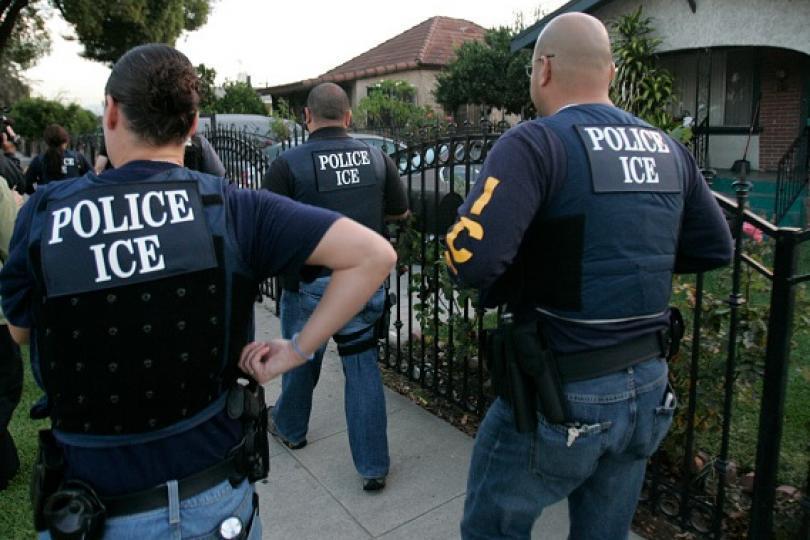ICE Raids Persist Despite California’s Status as a Sanctuary State
BY ISABELLA LORD

Just days after the inauguration of President Trump, a wave of U.S. Immigrations and Customs Enforcement (ICE) raids swept the Los Angeles area. In a five-day operation from May 20 to May 25, ICE arrested a total of 188 people in an apparent rampage. Most of these people had criminal histories with sexual assault and other violent crimes, but 19 of them were clean. Though Trump’s wall idea is still up in the air, he has passed several executive orders that make his stance on immigration clear: for ICE to become more powerful and sanctuary cities to lose funding. In retaliation, California legislature passed Senate Bill 54, which declares California a sanctuary state, a clear rebuke of federal policy. The term "sanctuary state" implies some sort of amnesty for illegal immigrants, but this is not the case. It does not stop people who are in the country illegally from being deported and it does not make citizenship easier to achieve. The bill prohibits state officers from asking about immigration status or using any of their resources to help with immigration enforcement. Many people are skeptical of the term "sanctuary" because it disrupts the relationship between national and state immigration enforcement.
Berkeley became the first sanctuary city in America in 1971, and many other cities followed suit in the 1980s. Other states, whose governments were vehemently opposed to immigration, such as Georgia, passed bills mandating that all their officers fully comply with federal immigration forces. California counties proclaimed themselves sanctuary without much protest, but the issue reentered national attention on July 1, 2015, when Katie Steinle was murdered in San Francisco. When it broke that the murderer had been deported five times before, grief turned to outrage. Many felt that California was incompetent in its deportation process. People feared that sanctuary state policies were foolish and dangerous for the entire state. This incident was cited by Donald Trump throughout his campaign to gain support for his immigration policies.
California legislators insist that the establishment of a sanctuary state will not cause a spike in crime. Many county sheriffs were furious with the sanctuary state bill, worrying that state law enforcement lost its power to protect people and that the bill fails to address other related issues, such as human trafficking. In March, Sacramento County Sheriff Scott Jones and ICE Director Thomas Homan held a town hall that led to a furious debate. Few were convinced by Horman that ICE will not target families. Sacramento Mayor Darrell Steinberg pressed the pair with questions on ICE operations. Though Jones is opposed to sanctuary cities, he did state he would never hold an inmate longer than necessary for ICE and that he would never let his officers be deputized by federal agents. "We don't conduct neighborhood sweeps. We don't arrest people on school grounds. We don't arrest people in churches. We don't arrest people in hospitals. We don't walk through neighborhoods looking for people that are different than we are," Homan said. He continued, "What I do is a target-enforcement operation. We go to a specific location looking for a specific individual. That's what we do."
Though it is too early to tell if the bill will cause an increase in crime, it has encouraged Trump to heavily reinforce ICE. It is debatable whether immigration is such a threat. Mexican immigration into the United States spiked at the turn of the century. This influx of immigrants was due to the appeal of the mining industry and the aftermath of the Mexican revolution. These immigrants were used for their labor and still are today. People liked the vulnerability of illegal workers and wanted to pay them less than minimum wage or barely anything at all. In fact, Mexico was exempt from the Immigration Act of 1924, which was designed to limit the immigration of Italians and Jews. After the Great Depression hit, there was no more need for the labor of Mexican workers and mass deportations began. This is not to say that illegal immigrants are not committing crimes, but the "immigration crisis" was largely made possible by the manipulation of migrant workers. Little is known about how dangerous illegal immigration is for the United States and there is little research on the matter. Though Katie Steinle’s death was a tragedy, it cannot be used to prove a crisis caused by illegal immigration. According to Thomas Homan, and as seen in the recent raids, ICE tends to target criminals first. Under Trump’s plan, however, ten million people are to be deported before his term is up – a tragedy for countless innocent families. With these raids, it seems unlikely that the sanctuary state bill will stop the president from accomplishing his deportation goal, especially if it is such a large priority at the expense of health care and the environment.
